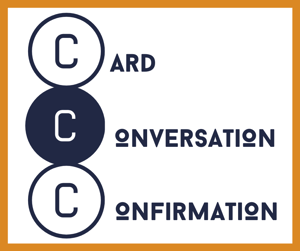Principia - meaning “collection of Principles” was first used by Isaac Newton in 1687 (one of the great heroes of the Enlightenment) as the title for his treatise on fundamental mathematics and physics1
In the first part of this blog post, we explored some of the foundational principles related to establishing a Playbook. In this edition we will look at some of the prerequisites and adoption scenarios.
When You Need an Agile Playbook
Ranging from 5-9 members, Agile teams are typically small. Even outside of Agile, sizing of teams is recognized as a critical element to the success of any endeavor that requires collaboration. For instance, Wharton Business School conducted a study across academic, sports and business teams, and concluded that 6-7 is indeed an optimal group size for best performance.2
In the Agile space, recent experience has demonstrated that team-based Agile adoption, most notably Scrum-based methods, can be used successfully to navigate our way to establishing a shared understanding of practices and roles. Most often this manifests itself in a team’s “working agreement” that is intended to capture basic protocols and practices at a local level, which are expected to evolve over time with experience.
However, once we step beyond the intimate confines of a small team, and seek to coordinate across multiple Agile teams, such a lightweight team-based approach begins to breakdown as an effective rallying point for shared process. Specifically, it is widely accepted that scaled Agile adoption across multiple teams necessitates a degree of normalization and alignment between those member teams. This will often encompass standardizing to some degree on nomenclature, roles, artifacts and practices. At the same time, we also need to preserve the capability for local tailoring and experimentation, but within agreed pre-defined and controlled boundaries.
Ta-dah: Introducing the Agile Playbook
So, what is a playbook? Well, it can (and should) mean many different things. Like most aspects of true “Agility” it’s all about finding what works well within a certain local context, and using that as a sweet spot to start evolving and improving. The Playbook is a concept. In some sense it is an extension of the team working agreement, but it is likely to be more robust than that. It may take different forms and be delivered through whatever communication channel(s) are most effective within an organization. From an implementation perspective, we might literally develop a bespoke adaptive online workflow tool, establish a process repository/wiki based library of standard templates, and/or capture our local specific methods in a spreadsheet/document on a shared drive. Whatever the Playbook solution, we need a highly visible, flexible and dynamic reference point that works for the team(s).
Some of the likely key attributes of an effective Playbook are:
- Avoid a limiting (rules-based) set of standards
- Observe the Goldilocks rule - keep it lean and include “just enough” detail
- Position it as a shared/collaborative Delivery Life-Cycle framework
- Allow space for innovation and experimentation
- Ensure a shared sense of ownership and change management
- Recognize and embrace the evolving nature of processes- that are owned by practitioners
- Base everything on real-world practices and roles
- Establish clear, but flexible, tailoring guidelines
- Promote use of retrospectives, metrics and piloting to drive perpetual improvement
Go Forth and Play with an Agile Playbook
In conclusion, the whole point of this article has been to stimulate a refreshed perspective on the way we think about process in an Agile world. Although collectively we’ve come a long way in developing Agile strategies and techniques, we still need to learn from prior experience and continue to evolve our thinking. So, let’s close out by circling back to the beginning (after all, Agile celebrates fast feed-back loops- right?) and give the last word to our hero – Isaac Newton:
“If we can see further than others, it is only by standing upon the shoulders of giants.”3
In other words, this does not have to be a zero-sum game, we can (and should) repurpose proven ideas, build upon lessons learned and smartly leverage some of what has come before.
You can also see where you are on the path to organizational agility with our Enterprise Agile Maturity Matrix, and learn more about Eliassen Group's approach to Agile consulting.
- 1. “Principia.” Random House Dictionary, 2nd ed., 2001.
- “Is Your Team Too Big? Too Small? What's the Right Number?" Wharton: University of Pennsylvania, 14 Jun, 2006, http://knowledge.wharton.upenn.edu/article/is-your-team-too-big-too-small-whats-the-right-number-2/.
- "Isaac Newton Quotes." BrainyQuote, 2018, https://www.brainyquote.com/authors/isaac_newton.


